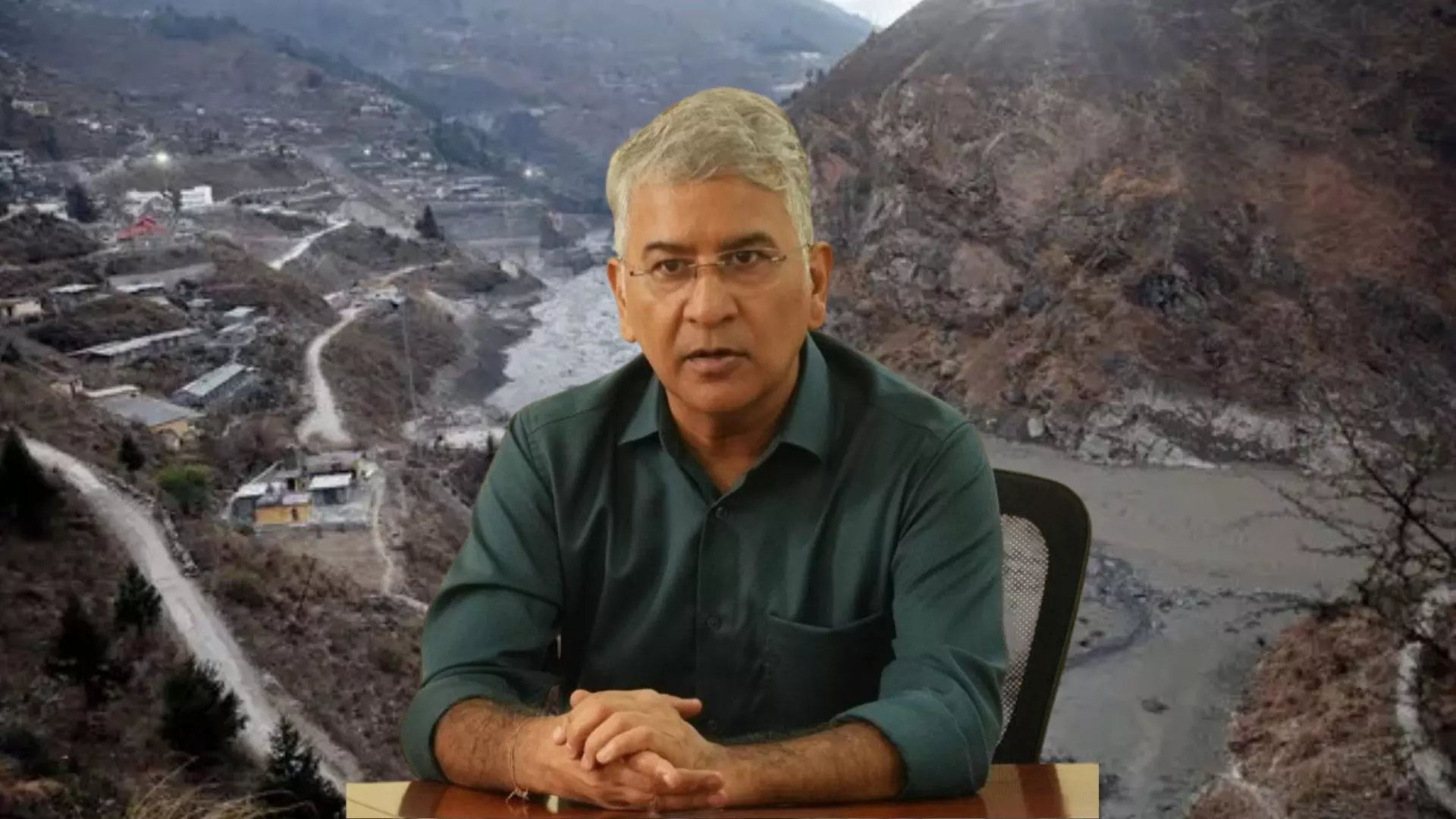
Anoop Nautiyal interview
Uttarkashi cloudburst: Are policy failures fuelling Himalayan disasters? | Anoop Nautiyal interview
After the Uttarkashi cloudburst, expert Anoop Nautiyal breaks down why such disasters are rising. Is India ignoring warnings in the Himalayas?

Uttarakhand is once again reeling from a natural disaster. What was initially called a cloudburst in Uttarkashi is now suspected to be the result of a glacial break, possibly caused by climate change and unregulated development.
In this interview, social activist and Uttarakhand policy expert Anoop Nautiyal speaks to Nisha P Sekar about what led to the deadly flash floods and what it says about governance in fragile Himalayan regions.
Was the Uttarkashi disaster the result of a cloudburst or something else?
First of all, it wasn't a cloudburst. Scientists and meteorologists are still trying to determine what exactly happened on that tragic Tuesday afternoon. Dharali, where the incident occurred, is a small kasba with fewer than 1,000 people. It's a tourist spot located 80 kilometres from Uttarkashi and about 20 kilometres before Gangotri.
What has emerged so far is that a part of a hanging glacier may have broken off. The cloudburst theory has largely been dismissed. According to the India Meteorological Department (IMD), rainfall in that area was only around 9 to 11 millimetres—insignificant for a cloudburst. However, local media and residents reported heavy rain.
The current theory is that a glacier fragment broke off and tumbled down a steep gradient. This transformed a narrow stream into a violent torrent, which is what we witnessed. Adding to the devastation is the fact that construction has occurred on riverbeds or floodplains.
Over time, people have forgotten the original course of rivers and built structures where rivers once flowed. That is why this tragedy unfolded.
Did the early warning system and local preparedness fail?
That's a very important question. Right now, Uttarakhand relies on generic alerts from the IMD. These are district-level alerts coded red, orange, yellow, or green, each with associated advisories. But Uttarakhand is vast—50,000+ square kilometres (sq km) across 13 districts. One district itself averages 4,000 sq km, making generic alerts nearly useless for hyper-local incidents.
For a place like Dharali with only 1,000 residents, there's no granular early warning system. IMD alerts might help district magistrates decide whether to close schools or anganwadi centres, but I've rarely seen them use it to evacuate people. Such proactive measures are extremely rare.
The lack of a pinpointed early warning system is a glaring gap. Even where systems exist, they're scattered and disconnected. We urgently need comprehensive and micro-level EWS (early warning systems) in vulnerable hill communities.
Are such disasters linked to environmental mismanagement?
Yes and no. The climate crisis is global, and the Himalayas are particularly vulnerable. Flash floods and earthquakes have occurred here for over a century. But what's changed is the frequency and intensity of disasters, which have been worsened by indiscriminate development.
Since Uttarakhand became a state 25 years ago, we've lost nearly 50,000 hectares of forest land to development projects like mining, hydropower, tourism, and urbanisation. That translates to seven football fields of forest being lost every single day.
Projects like the 900 kilometres of Char Dham all-weather road have required felling over 50,000 trees. Tunnels are being planned under Kedarnath. A 125- km rail line is coming up. These aren't just projects—it's about how ruthlessly they're executed. Contractors are cutting corners, blasting fragile mountains, and ignoring ecological warnings.
Compensatory afforestation is supposed to make up for lost forests, but it rarely works effectively. The model of development needs urgent rethinking.
What should the government be doing differently in ecologically sensitive zones like Uttarkashi?
The government must urgently correct its reckless course. No one is against development, but do we really need this level of construction? Why so much concrete? Why not invest in education, healthcare, and real community needs instead of just roads and hotels?
Uttarakhand has cut the most trees among all Himalayan states. That’s a heartbreaking fact. New Delhi and Dehradun must create a model that respects the region's fragility.
We already have regulations, like the Bhagirathi Eco-Sensitive Zone declared in 2012. It covers 100 kilometres from Gomukh to Uttarkashi. But the implementation is poor.
Governments also need to take people along. Political courage is lacking because constituencies are small and votes matter. No leader wants to lose even a handful of votes by challenging unsafe construction or tourism.
We also need to seriously implement carrying-capacity measures. There’s been talk but little action.
The biggest issue is that our state is reactive, not proactive. We only act after disasters occur. While the rescue teams, including the Army and NDRF (National Disaster Response Force), are doing commendable work, the larger governance failure lies in not preventing disasters through better planning.
The flooding in Dharali happened in seconds. No government could have stopped that. But the question is: why were people allowed to build homes and hotels on riverbeds in the first place? That’s the real failure we must address.
The content above has been generated using a fine-tuned AI model. To ensure accuracy, quality, and editorial integrity, we employ a Human-In-The-Loop (HITL) process. While AI assists in creating the initial draft, our experienced editorial team carefully reviews, edits, and refines the content before publication. At The Federal, we combine the efficiency of AI with the expertise of human editors to deliver reliable and insightful journalism.

